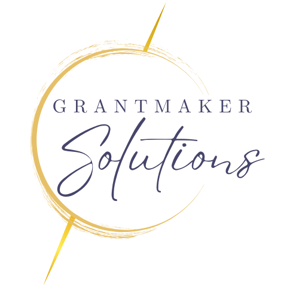The DEI Landscape is Changing: Considerations for Foundations
The philanthropic sector is currently witnessing a significant shift in the Diversity, Equity, and Inclusion (DEI) landscape. As federal and state governments reassess their approaches to DEI programs, many grantees are turning to foundations for continued support. This transition raises important strategic and operational questions for foundation leaders that merit careful consideration.
Dee Mueller | CEO & Founder
3/1/20252 min read


The Current Landscape
Recent policy changes at federal and state levels have resulted in the scaling back or dissolution of numerous DEI initiatives. Some federal grantees have lost funding due to their DEI programs, creating a vacuum that private foundations are increasingly being asked to fill. This shift places foundations at an interesting crossroads between their missions and the evolving political environment.
Key Considerations for Foundations
Legal and Regulatory Environment
Foundations operate under different constraints than government entities. While they have more flexibility in their grantmaking priorities, they must still navigate relevant laws and regulations. Understanding the distinction between what government agencies are prohibited from funding versus what private foundations can legally support is crucial.
The legal landscape for foundations remains largely unchanged despite shifts in government policy. Foundations still maintain their ability to fund programs aligned with their missions, including those with DEI components, provided they comply with applicable laws regarding private foundation activities.
Mission Alignment and Strategy
Foundations should revisit their mission statements and strategic plans to ensure clarity about their organizational values and priorities. This is not about changing direction in response to political winds, but rather about being intentional and transparent about existing commitments.
Questions to consider:
How central are diversity, equity, and inclusion to your foundation's mission?
What specific outcomes does your foundation seek to achieve through its grantmaking?
How do you measure the effectiveness of grants in achieving these outcomes?
Risk Assessment
With increased scrutiny on DEI initiatives, foundations should conduct thorough risk assessments:
Reputational considerations with various stakeholders
Potential for increased regulatory attention
Impact on relationships with government entities
Effects on donor and community relations
Understanding these factors allows foundations to make informed decisions rather than reactive ones.
Communication Strategy
Clear communication about the foundation's mission, values, and grantmaking criteria becomes even more important in a polarized environment. Foundations may consider:
Reviewing language used in grant guidelines and communications
Ensuring consistency between stated values and funding decisions
Developing messaging that focuses on outcomes and impact rather than ideology
Grantee Support Beyond Funding
Foundations can provide value to grantees navigating this shifting landscape through:
Technical assistance on compliance with changing regulations
Convening spaces for peer learning and support
Capacity building to help organizations articulate their impact in ways that resonate across diverse audiences
Balancing Principles and Pragmatism
The most thoughtful approach for foundations involves neither wholesale abandonment of DEI principles nor confrontational positioning against policy changes. Instead, foundations can focus on:
Outcome-oriented language: Emphasizing measurable improvements in communities served rather than ideological positioning
Evidence-based approaches: Funding and highlighting programs with demonstrated effectiveness
Community-centered decision making: Ensuring that initiatives respond to expressed community needs rather than external agendas
Collaborative approaches: Finding common ground with diverse stakeholders around shared goals
Conclusion
The changing landscape presents both challenges and opportunities for foundations. By maintaining focus on their missions while thoughtfully assessing the environment, foundations can continue to serve their communities effectively regardless of shifting political winds. The most successful foundations will be those that can articulate their work in terms of concrete outcomes that resonate with diverse stakeholders, while remaining true to their core purpose and the communities they serve.
Looking to strengthen your foundation's grantmaking approach? Grantmaker Solutions offers discreet, customized solutions that drive grantee success for maximum impact philanthropy. www.grantmakersolutions.com
Contact Us
MAXIMUM IMPACT PHILANTHROPY
connect@grantmakersolutions.com
(515) 236-6829
© 2025. All rights reserved.


